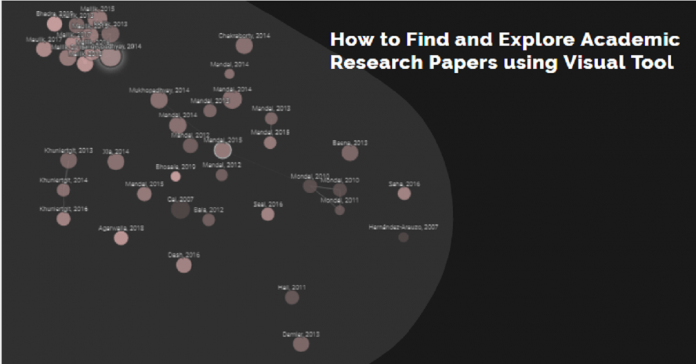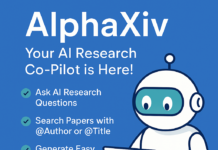In this post, we will show you how to find and explore academic research papers using a visual tool.
Here, we will use the Connected Papers, a free easy to use the state-of-the-art literature mapping digital tool.
A literature review is one of the most important tasks when we write research papers, master thesis, or Ph.D. dissertations.
Early-stage researchers have to face a lot of challenges during this phase.
It is a difficult task for researchers to gather relevant and credible resources in the field of their interest and organize them. Connected Papers alleviates the above-mentioned problems.
Before you start searching and exploring, you need to know details about the state-of-the-art mapping tool. After a long beta version, the founders have released the Connected Papers software to the public.
Connected Papers tool is a free and easy-to-understand smart tool. This citations mapping tool lets you search the relevant and credible resources.
It has a user-friendly graphical user interface. You do not need to install any software for accessing the research papers.
You can use it through your desktop web browser. But, mobile browsers are not supported yet.
How Does It Work to Find and Explore Research Papers
The working procedure of this tool is straightforward and easy to understand.
First, you just put a paper of your domain then it generates a graph that displays that part of paper space and their interconnectivity.
The graph is generated using a similarity metric based on the concepts of cocitations and bibliographic coupling.
Beyond that, it also provides additional functions to get the knowledge of “Prior works” and “Derivative works”.
Like Cocites and Local Citation Network, this literature mapping tool accepts one paper for generating the graph.
Local Citation Network uses references against your feeding paper rather than the citations.
But, Cocites looks at the citation to do the same work. Connected Papers web app uses both of these two concepts to do the same job.
To know more details about its working procedure visit the page.
How to Read the Graph
In the graph, each node is an academic paper related to the origin paper. node size represents the number of citations.
Once you click on the “? mark within circle”, the following sub-window will appear.

In this section, we will show you how to find and explore academic research papers using this visual tool.
Connected Papers tool lets you put one paper in the search area to get the relevant papers.
Once you enter the paper, it generates a graph of similar and relevant papers.
Let’s get started.
Step #1
The first thing you need to do is open the Connected Papers on your desktop browser.
Once you open the site, the following window will appear.

Step #2
Now, you just enter your paper of interest in the search area for obtaining similar papers.
We select the following research paper from our university for analyzing purposes:
“Prediction of protein subcellular localization by incorporating multiobjective PSO-based feature subset selection into the general form of Chou’s PseAAC”

Step #3
Once you hit the “Build a graph” button then it will generate the graph using a similarity function based on the integration of co-citations and bibliographic coupling.
You will be taken to the page:

It will take a few seconds to generate the graph. This tool may take upto several minutes on rare occasions.
As per their site, they analyze the order of ~50,000 papers and select a few dozen with the strongest connections to the origin paper.
Step #4
Each node in the graph represents an academic research paper. You can see the preview of the paper on the right sidebar.
The frequently cited papers are represented by large circles. Recent papers are denoted by a dark color.
Below is the snapshot of the graph:

They used a layout algorithm for clustering similar papers in space. Similar types of academic papers are connected by edges.
Prior Works
You can see the prior works by clicking on the “Prior Works”.
It provides you top similar ancestral of the papers in the graph.
In addition, you will also get seminal works in a similar field.

Derivative Works
It shows a list of common descendants of the manuscripts in the graph. It includes systematic reviews and meta-analyses in the domain.
You can see the papers by clicking on the “Derivative Works” on the left top.

Conclusion
In this tutorial, we have just given a brief guide on how to find and explore academic research papers using visual tool Connected Papers.
The web app helps you explore literature in your field of research.
Besides, we also discussed its working procedure and how to read the graph.
In our earlier blog post, we briefly described the best dgital tools for academic research.
We hope you liked this tutorial on how to explore research articles using this unique software.
Update (13.04.2021):
Scite browser extension now displays Smart Citations directly in Connected Papers
Update (15.06.2021):
You can open new graphs separate browser tabs!
Now, it is easier to keep track of open graphs. Connected Papers allows you to save individual graphs as bookmarks.
In order to open graphs in the background, you just type Ctrl+click.
Moreover, you can see quicker and slicker graph loading in the software.
Demonstration:

For Details visit- Connected Papers














